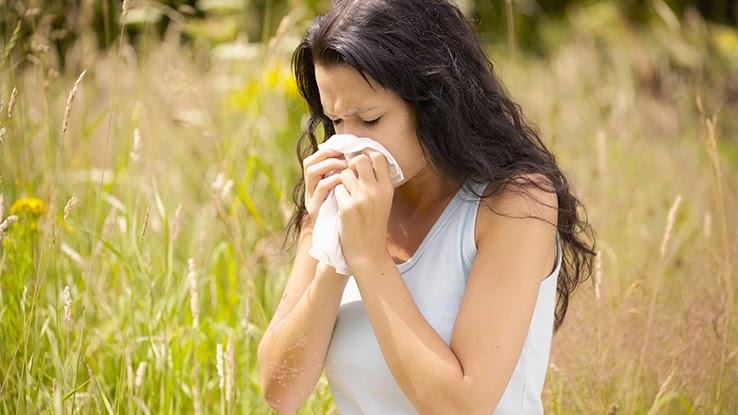
While pollen spreads flowering plants, trees and grasses across the world, it also brings something decidedly less pleasant: allergies. If you’re allergic to pollen, your body reacts to its presence as if pollen were a virus or bacteria and produces antibodies to fend it off. As these antibodies come into contact with cells in your bodies that produce histamine and other substances, an allergic reaction begins, with symptoms including congestion, runny nose, post-nasal drip, watery eyes, sneezing and sensitivity to other irritants in the air. Pollen allergies can even contribute to asthma, sinus conditions and more.
If you have a pollen allergy, learning the day’s pollen count can help you anticipate when to expect symptoms to crop up and the best days for outdoor activities. There are numerous websites that can help you identify the pollen count in your area. Some even list other factors that can affect pollen allergies, such as wind speed (which can affect how far pollen spreads) and humidity (which can weigh pollen down, keeping it out of the air). With these sources in hand, pollen allergies can be much more manageable.
Pollen.com
Pollen.com is a popular resource for checking local pollen levels, and for good reason. Along with regional forecasts, the site features a national allergy map with color-coded segments to indicate where the pollen count is highest and lowest across the country, allowing you to see larger patterns in the way pollen spreads. Clicking on a city brings you to the most current report, including the top allergens in that area.

Reports are updated daily, and you can view a five-day forecast as well as a 30-day pollen level history to better understand conditions where you are. You can also sign up to receive allergy alerts via email, which will notify you whenever the pollen count in your area reaches the moderate level, which is when most people with allergies begin to experience symptoms. Similarly, Pollen.com’s Allergy Alert lets you view the local pollen count wherever you go. It’s available for both iPhone and Android and comes with the ability to view pollen count forecasts and maintain an allergy diary.
WeatherBug
While WeatherBug as a whole is geared more toward general weather forecasts, the website partners with Pollen.com to provide you with the latest information about allergies in your area, including the current pollen count and most prominent allergens. To check the allergy levels in your area using WeatherBug, click on the “Life” tab at the top of the page. You’ll see a segment for allergies and pollen

WeatherBug incorporates weather forecasts to give you a more comprehensive idea of current levels in your area and what you can expect over the next few days. For example, you might find that current weather conditions are suppressing pollen enough to keep the count down through humidity or lack of wind. As with Pollen.com, WeatherBug also maintains an app that’s available for Android and Apple devices as well as Windows Desktop and Mac computers.
Zyrtec
Zyrtec manufactures over-the-counter medications to help relieve symptoms from indoor and outdoor allergies. The brand’s medicines can be used to alleviate the symptoms of outdoor allergies, including tree, weed and grass pollen, as well as indoor allergies, such as animal dander, dust mites and mold. When it comes to the former, Zyrtec offers its own allergy map so that you can check the local pollen count and determine which allergens are currently the most prominent.

One notable advantage of Zyrtec’s map is that you can input your ZIP code to see pollen counts specific to your area rather than being limited to checking conditions in the closest cities. You can also submit feedback about whether you’re feeling a high, low or normal response to local allergens and see how others are feeling as well.
National Allergy Bureau
The National Allergy Bureau is part of The American Academy of Allergy Asthma & Immunology’s (AAAAI) Aeroallergen Network, a group of volunteers that continuously monitor pollen and mold spore levels throughout the United States and parts of Canada and Argentina. As with many of the sites on this list, it maintains a map of pollen levels broken down into specific regions.

You can click on the area most relevant to you for a further breakdown by major cities. Selecting on one will bring you to the most recent data for pollen and spore levels in your area. However, because pollen and spore data are only collected every 24 hours, the information you’re viewing reflects that of the previous day’s count. If a current count isn’t available, there’s an option to check out nearby stations with more current counts.
The Weather Channel
If you’re wondering how you might be feeling over the next two weeks, The Weather Channel provides 15-day forecasts for nearly every part of the country. Each day’s risk of allergy symptoms is assigned a rating from “very low” to “very high” to help you anticipate how your allergies will respond to the day’s pollen count. For more specific information, scroll down to find a breakdown of what kinds of pollen are in the air, such as ragweed, tree pollen or grass pollen, that can help you determine if you’re particularly likely to experience symptoms.

Additionally, The Weather Channel maintains an assortment of helpful tips for dealing with allergies on the forecast page. You can also find links to more in-depth articles about coping with allergies and how weather affects them.
Resource Links:
https://www.weatherbug.com/life/pollen/
https://www.zyrtec.com/allergy-forecast-tools-apps





